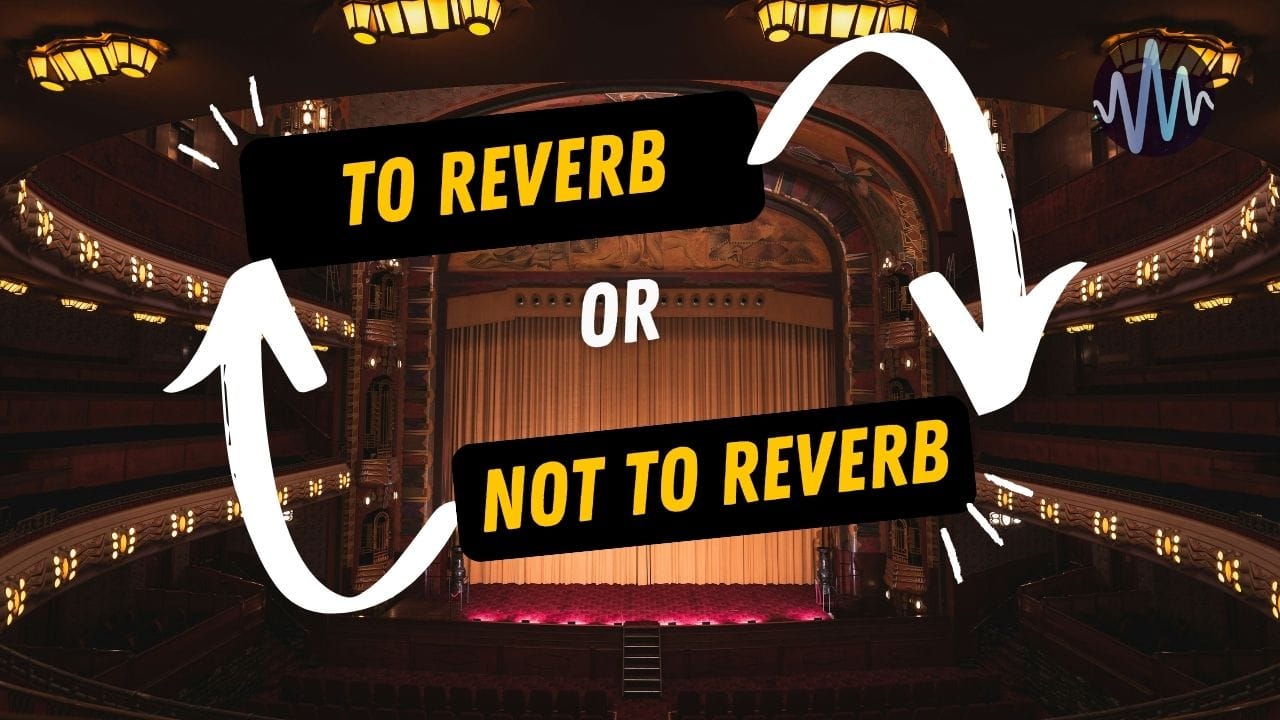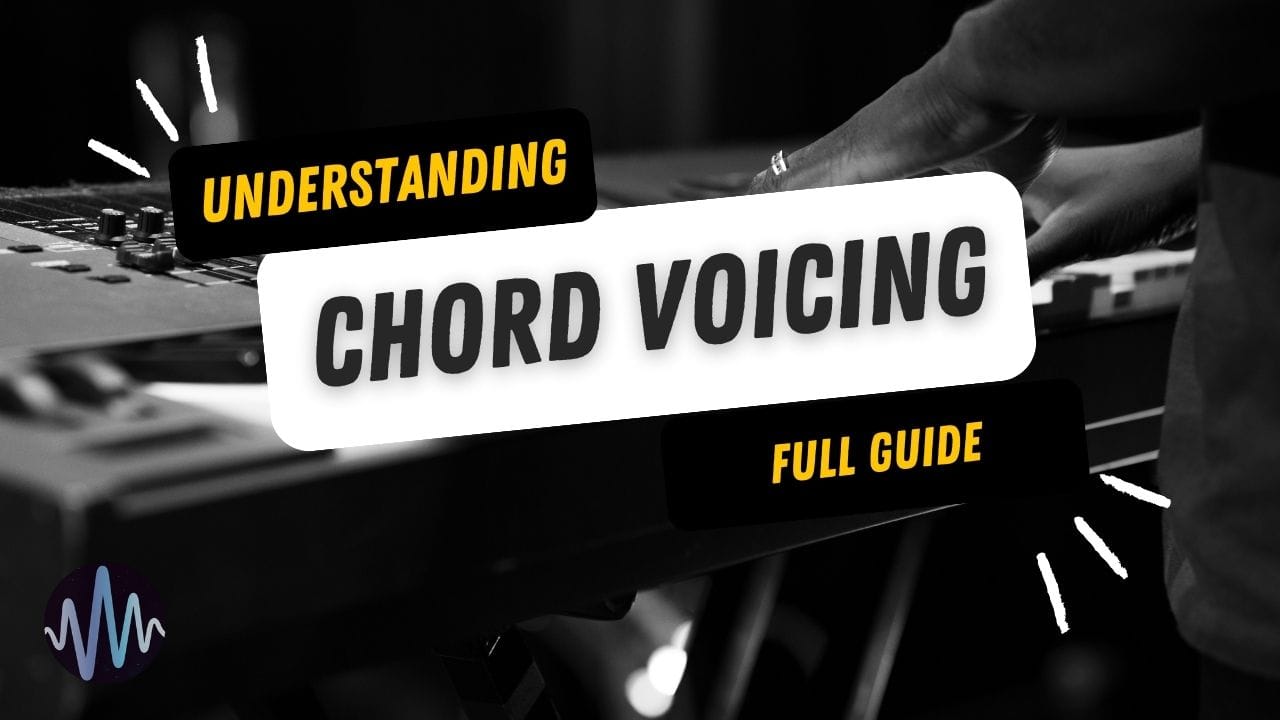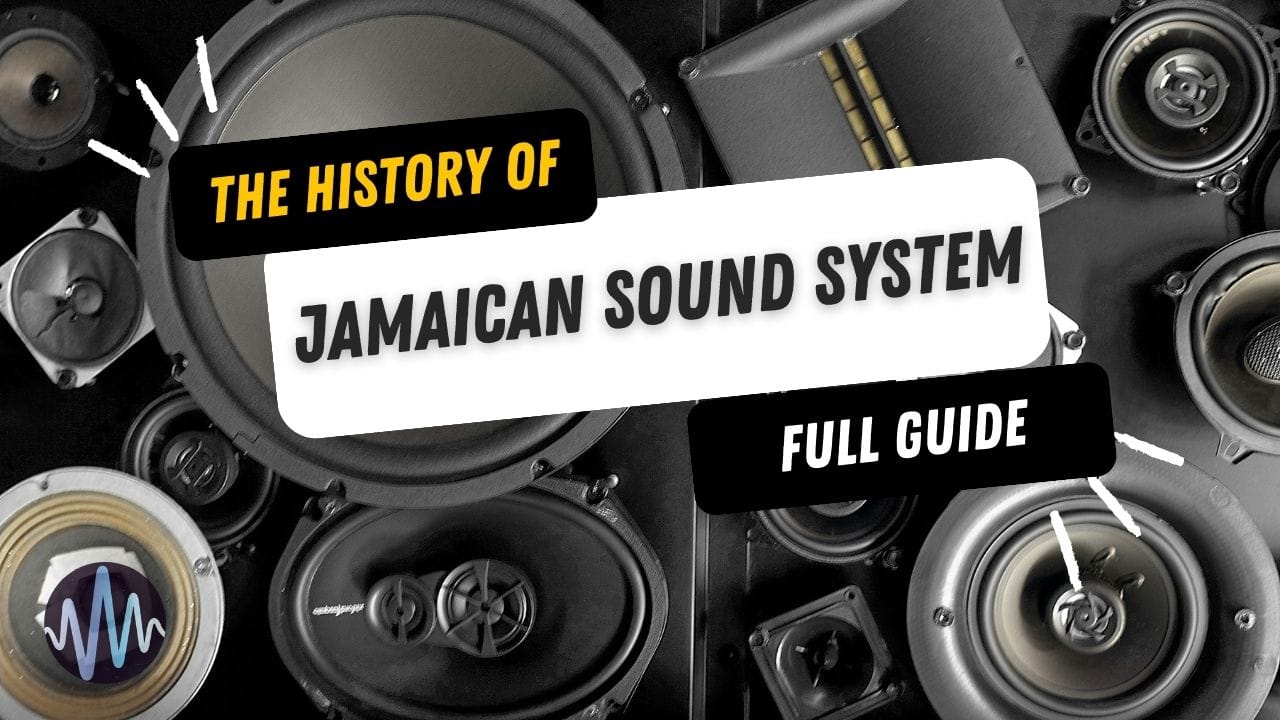
Reverb is a top-of-mind answer to the question, "How do I make this mix sound bigger?"
Load up a preset, dial in some decay, maybe tweak the pre-delay if you're feeling adventurous, and done – instant space, right?
It doesn't always work out that way.
Non-judicious reverb use risks muddying mixes and obscuring definition, not to mention causing phasing issues and headroom-absorbing buildups in the low-mids and bass regions.
Moreover, reverb as an effect can be pretty boring and samey, with millions of producers reaching for the same presets in the stock plugins that ship with DAWs.
Let's look into why we reach for reverb in the first place, where it goes wrong, and what to seek out as an alternative.
- Why Do We Use Reverb?
- Why Reverb Can Present Problems
- What Are The Alternatives to Reverb?
- When Reverb Has No Alternative
- Closing Thoughts
Why Do We Use Reverb?
Reverb is an extremely important effect. Fundamentally, it’s designed to mimic how we experience sound in the real world.
When you're in a room listening to someone talk or play an instrument, you don't just hear the direct sound – you hear reflections bouncing off walls, ceilings, and floors. Your brain uses these reflections to understand the space you're in.
While you can record in spaces with natural reverb, e.g. a cathedral or stairwell, this gives you no control.
So reverb fills that gap to give sounds a controllable sense of space, though the reasons we use it have become broader:
- Reverb creates the illusion of an environment. A vocal with reverb suggests a performance space. Drums with reverb feel like they were played in a room rather than assembled from samples, and so on.
- It can glue disparate elements together. When you apply the same reverb to multiple tracks, it places them in the same implied space – particularly useful for sample-based production where sounds come from different sources.
- It makes things sound "finished." A completely dry mix can feel unfinished or demo-like, even if technically well-balanced.
- It adds weight and dimension. Thin, dry samples can lack weight, which reverb can add to thicken the overall mix.
- It's a creative effect too and can be combined with side-chaining, delay, and other effects to create production techniques and soundscapes.
Reverb is vital for creating a well-rounded, dynamic, spacious mix. But you can have too much of a good thing. And fixing things with reverb when reverb isn’t the best solution can rapidly lead to issues.
Honestly an amazing guide to reverb that covers many of the concepts explored here
Why Reverb Can Present Problems
Reverb seems like a simple tool, but without proper control, it creates a surprising number of issues that can degrade your mix rather than enhance it.
The problems aren't always obvious at first, and they tend to accumulate when you have multiple reverbs interacting with each other.
Let's break down the risks of using too much reverb:
Frequency Buildup and Mud
When you add reverb to a sound, the reverb tail contains frequencies across the entire spectrum by default (because it's reflecting the entire sound).
So if you reverb a snare drum that has energy from 100Hz up to 10kHz, the reverb tail will also contain frequencies from 100Hz to 10kHz - just reflected and decaying over time.
This can create problems in the low-mids or bass regions, roughly that 200-500Hz zone where mixes already struggle for space. Here's what's competing in that zone:
- Bass guitar fundamentals
- Kick drum body and thump
- Piano lower registers
- Guitar chord weight
- Synth pad foundations
- Male vocal fundamentals
This issue is worse when you use long-tail reverbs for atmosphere, as the tail might carry more weight than you think.
Even if you're being careful with EQ, that buildup is hard to control once it starts.
You can high-pass the reverb at 400Hz or even 800Hz, but you're still dealing with the cumulative effect of multiple reverbs filling up the mix. You might not remove as many of those frequencies as you think you are.
Tip: If you want to locate mud in your mix, add a frequency analyzer to your master, mute all your tracks, and slowly unmute them one by one while watching the action in the low-mids and bass.
Pay attention to what happens in the 200-500Hz range as each track comes in.
When you see a sudden buildup or things start to get congested, you've found your culprit.
Loss of Impact and Transients
Reverb fundamentally changes how transients behave. A transient is that initial attack – the crack of a snare, the thump of a kick, the pluck of a bass string. It's what gives sounds their impact and definition.
When you add reverb, you're extending that sound over time. The sharp, immediate attack is followed by a tail of reflections that decay gradually. This smears the transient, making it less defined. Plus, it can smear other transients after it, causing comb filtering and phase issues.
This is very common when you're working with samples.
Consider that you've found a perfect drum hit; it sounds great on its own, but then you add reverb, and suddenly it's sitting back in the mix, not cutting through the way it should.
You compensate by turning it up, which throws off your balance and starts a cycle of adjustments.
The issue compounds when you're layering multiple drum elements. Each one has its own reverb tail, and those tails are overlapping and obscuring the transients of other hits.
Generic Sound and Overuse
There's also a creative problem at hand here. Reverb presets get used so much that they start to sound generic.
Everyone's using the same plugins with the same algorithms and the same settings.
"Medium Hall," "Vocal Plate," "Drum Room" – these are on millions of tracks.
Listeners might not consciously think "oh, that's the stock Logic reverb," but you're still risking cookie-cutter production.
Beyond that, there's simple overuse. It's easy to add too much reverb. A little here, a little there, and before you know it, everything's swimming in reflections.
This is particularly common when working in untreated rooms with poor monitoring. We can't hear the low end clearly, so we add more reverb to make it sound "bigger."
We're really just compensating for their monitoring environment rather than making actual mixing decisions.
Phase Issues and Comb Filtering
Reverb creates phase interactions that can hollow out your sound. This occurs when reverb reflections mix back with the original signal at slightly different times. Some frequencies are reinforced, while others are cancelled out or weakened.
One specific result of this is comb filtering – a repeating pattern of notches and peaks across the frequency spectrum. It's called "comb" filtering because on an analyzer it looks like the teeth of a comb with alternating dips and spikes.
This is common when you use reverbs on tracks and then also on busses, stacking them across your track. Your mix starts to sound phasey and unstable, especially when you sum to mono.
What Are The Alternatives to Reverb?
So if reverb creates all these problems, what else can you use to add depth and dimension to your productions?
It turns out there are quite a few techniques that give you space without the downsides.
Most of them have been used on classic recordings for decades – they're just less obvious than slapping on a reverb preset.
Delay-Based Depth
Instead of generating a dense cloud of reflections, delay creates distinct, repeatable echoes that you can control and position with greater precision.
The beauty of delay is that it offers dimension without filling up the frequency spectrum with reverb.
Try filtering the delay return – high-pass at 500Hz to keep low-end tight, or roll off highs above 8kHz for a more subtle effect. You're building space in specific frequency ranges rather than across the whole spectrum.
Ping-pong delays bounce between left and right channels, creating width and movement. Set the timing to your track's tempo – eighth notes or dotted eighths work great. Keep feedback low, maybe three or four repeats maximum.
This works brilliantly on:
- Percussion and shakers
- Synth stabs and hits
- Vocal phrases at the end of lines
- Guitar licks and arpeggios
The sound appears to move through the stereo field. You gain dimension and interest without any reverb characteristics.
Another technique is to use micro-delays (10-40ms) stacked at different times to create thickness and width. Set up three or four delays at slightly different times – say 12ms, 23ms, 35ms – with no feedback. Pan them differently across the stereo field.
This technique works wonders on synths and leads. It's kind of like a chorus-like effect, but with more control and less obvious modulation.
Early Reflections Only
You can use reverb without the reverb tail. Most reverb plugins let you isolate just the early reflections – those first few milliseconds before the dense reverb tail kicks in.
These early reflections are what your brain uses to understand room size and material. They give spatial cues without the frequency buildup and loss of punch.
How to set it up:
- Load your reverb plugin
- Find the early reflections or ER section
- Turn down or mute the reverb tail completely
- Adjust the early reflection level to taste
- Set the room size to small or medium for tight spaces
Plugins like FabFilter Pro-R 2, Valhalla Room, and most UAD reverbs give you detailed control over early reflections separate from the tail. Even stock DAW reverbs often have these controls.
The early reflections tell your brain "this sound exists in a space" without creating the distance and mud that full reverb tails introduce.
There are a few nice tutorials on wielding early reflections to great effect.
Saturation and Harmonic Content
This one surprises people, but saturation creates perceived depth without spatial processing.
When you run sounds through analog emulation or subtle distortion, you're adding harmonic content – overtones not present in the original signal. These harmonics fill out the frequency spectrum and make sounds feel richer and more present.
Different saturation types add different character:
- Tape saturation: Even harmonics - warmth, glues elements together
- Tube saturation: Even and odd harmonics - richness with a bit of edge
- Transistor saturation: Odd harmonics - adds grit and aggression
For depth without reverb, aim for tape or tube-style saturation. They add body and dimension while keeping sounds sitting forward in your mix rather than pushed back.
Ambience and Background Texture
Real spaces are never completely silent. There's usually some form of ambient sound – electrical hum, air conditioning, distant traffic, the subtle noise of a room itself.
Read our article on room sound to see how famous recording rooms and spaces had a huge impact on music. You can also read this guide to layering to make your music sound fuller.
Field recordings work brilliantly for this. Record the "silence" in different environments:
- Your bedroom
- A quiet street
- An empty parking garage
- Rain outside your window
- Café background noise
Layer these recordings very quietly under your track – we're talking barely audible, almost subliminal levels.
Vinyl crackle and tape hiss serve similar functions when appropriate. They create a consistent noise floor that unifies disparate elements and adds perceived depth.
You can find noise samples all over – including right here on Sample Focus – or generate them with plugins like iZotope Vinyl or RC-20 Retro Color.
The same noise bed running throughout creates cohesion between different samples and instruments, offering a similar level of glue to subtle reverbs.
Explore some ambience samples on Sample Focus here.
When Reverb Has No Alternative
Reverb is not the enemy, especially for the right sounds! Background vocals, atmospheric pads, distant effects – these benefit from reverb because you're intentionally creating distance and space.
Reverb is invaluable when:
- Creating obvious atmospheric or ambient effects
- Genre conventions demand it (dub, ambient, shoegaze)
- Background elements that should feel distant
- Special effect moments that need drama
Even then, consider using it as a parallel effect rather than an insert. Send your sound to a reverb bus and blend in just enough to add dimension without washing out the original.
It’s a good practice that will help you keep your mix focused and avoid wash and mud.
Closing Thoughts
Depth and dimension in music production don't require reverb by default. Delays, saturation, ambience, stereo techniques, and clever layering all create space without the problems reverb introduces.
The goal is clarity, punch, and character – not just "bigness" for its own sake.
When your drums hit hard, your mix breathes naturally, and nothing feels washed out or pushed back when it should be present, you've found the right balance!
Looking for samples that already have character and presence built in?
Sample Focus has thousands of professionally processed loops, drums, and one-shots ready to drop into your productions. Browse the collection here!





Comments